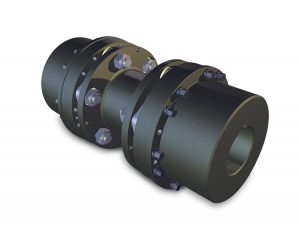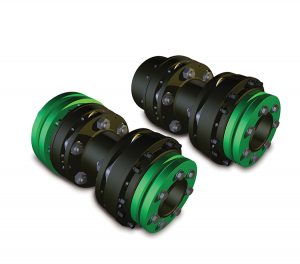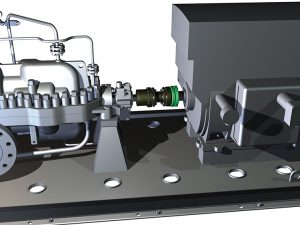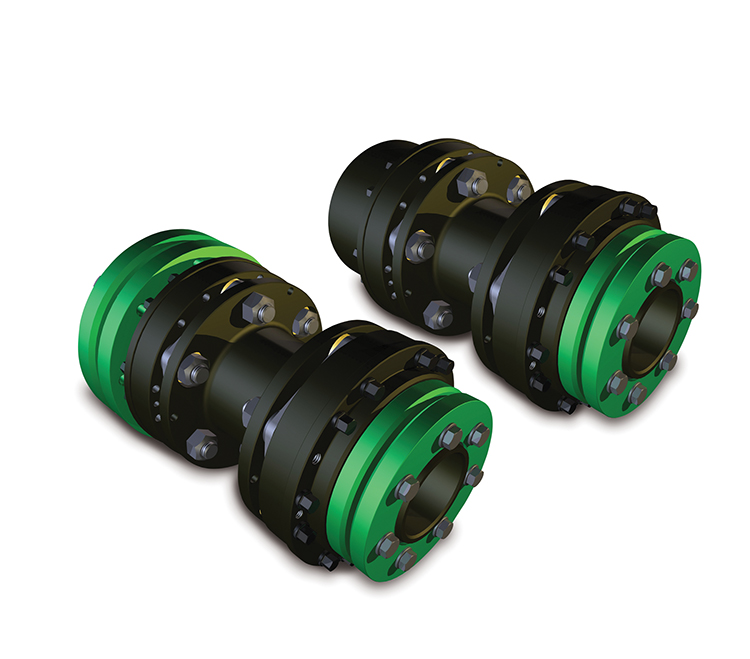By Matt DeFord
Product Manager – GP Disc Couplings
Ameridrives – TB Wood’s Couplings
The oil and gas industry uses a wide range of pumps in typical power train configurations. Most oil and gas pump installations, including offshore platforms, oil and gas refineries and processing facilities, are required to meet API 610 (American Petroleum Institute) standards. API 610 outlines minimum standards for pump safety, reliability and maintenance in these very hazardous environments.
 Ameridrives Couplings is releasing the Torsiflex coupling, originally designed by Bibby Turboflex for the API610 market in Europe, as the Torsiflex-i in the North American market, both units of Altra Industrial Motion. “The new Torsiflex-i flexible disc couplings are compliant with API 610, and the more demanding API 671 standard can be achieved, ” according to Troy Lumpkin, product engineer at Ameridrives.
Ameridrives Couplings is releasing the Torsiflex coupling, originally designed by Bibby Turboflex for the API610 market in Europe, as the Torsiflex-i in the North American market, both units of Altra Industrial Motion. “The new Torsiflex-i flexible disc couplings are compliant with API 610, and the more demanding API 671 standard can be achieved, ” according to Troy Lumpkin, product engineer at Ameridrives.
In addition, the coupling is certified to meet ATEX 94/9/EC ratings for Group 2/Category II standards through the use of anti-sparking overload washers, with operational characteristics which include no maintenance, zero backlash, and easy interchangeability. Torsiflex-i couplings feature all-metal construction and require no lubrication. They incorporate a plug-in spacer design which allows installation and removal without disturbing the pump alignment.
Lumpkin goes on to point out, “Torsiflex-i couplings also feature a robust disc pack design. This allows a greater torque load in a smaller coupling, reducing coupling weight. Max bores matched to NEMA motor shafts provide up to a 60% weight savings. This, combined with longer bearing life, provides a lower cost per application.”
The coupling’s large bolts provide a high clamp load, enabling an increased frictional  torque load combined with reduced bolt-bending stress. A smaller diameter and lower weight per horse power provide better inherent balance. Hub attachment screws come in both inch and metric sizes. Torsionally stiff and backlash free, the Torsiflex-i also incorporates an anti-flail feature. Spark-free overload protection is standard on all units. This makes them ideal for use in gas zone environments. A full line is offered with load ratings from 0.26kNm to 85kNm (2300 lb.in. to 1,062,000 lb.in.), and speeds from 3,600 to 8,000 RPM.
torque load combined with reduced bolt-bending stress. A smaller diameter and lower weight per horse power provide better inherent balance. Hub attachment screws come in both inch and metric sizes. Torsionally stiff and backlash free, the Torsiflex-i also incorporates an anti-flail feature. Spark-free overload protection is standard on all units. This makes them ideal for use in gas zone environments. A full line is offered with load ratings from 0.26kNm to 85kNm (2300 lb.in. to 1,062,000 lb.in.), and speeds from 3,600 to 8,000 RPM.
“In use, Torsiflex-i couplings are essentially fit-and-forget units. They have no moving parts, so they require no maintenance. They need no lubrication however, the presence of oil in the environment will not affect the operation of the coupling.” Lumpkin said. This is achieved by using large aircraft-quality disc pack bolts that are larger than those used by competitive couplings. As a result of this design, the disc packs in the coupling can be clamped harder together to prevent fretting. Reduced fretting reduces the possibility of premature coupling failure.
Cold install hubs meet industry demand
“Ameridrives has successfully responded to the industry need for a cold install hub that provides the secure torque transmission and balance repeatability of an interference fit,” noted Lumpkin. Incorporating new Torsi-Lock® hubs with the Torsiflex-i coupling addressed heat and flame concerns by eliminating Hot Work Permits associated with shrink fitting typical coupling hubs.
“We combined our Ameriloc shaft locking devices onto the Torsiflex-i couplings to provide a pre-engineered solution that meets the balance requirements of API 610,” explains Lumpkin. “Torsi-Lock hubs offer the ease of a slip fit with the power of a shrink fit.”
The Torsi-Lock hubs provide easy, repeatable removal and installation, and eliminate hub to shaft fretting. The hubs can also compensate for variances in shaft spacing. Units can be slipped on and fixed in place in the needed location. The hub and locking device are balanced and match-marked to assure optimum balance performance.
Torsi-Lock hubs can be specified for one or both coupling hubs and sized to accommodate a variety of shaft diameters. The Torsi-Lock hub/Torsiflex-i coupling combination may be used with keyed or keyless shafts, but a half-key is recommended with keyed shafts to reduce unbalance.
“By carefully selecting the proper materials, we were able to prevent permanent shrinkage of hub to shaft,” Lumpkin said. “We utilized carbon steel for the hubs, spacers and adapters. Stainless steel (301) is used for discs while alloy steel is used for bolts and nuts. Overload collars are made of a proprietary high-strength ‘non-sparking’ material.”
Users may specify alternative materials for specific applications. Special coupling versions are available for torque overload protection, limited end float, applications requiring electrical insulation and even long spacer designs. Bolted adapters suitable for high cyclic torques are available.
 Torsiflex-i couplings mated with Torsi-Lock hubs can be used to connect pumps to motors in many petrochem industry applications including offshore oil platforms, oil processing facilities, and gas processing plants including liquefied natural gas (LNG) plants. They also can be used in oil refineries, chemical processing plants, power stations (boiler feed water pumps) and co-generation power plants.
Torsiflex-i couplings mated with Torsi-Lock hubs can be used to connect pumps to motors in many petrochem industry applications including offshore oil platforms, oil processing facilities, and gas processing plants including liquefied natural gas (LNG) plants. They also can be used in oil refineries, chemical processing plants, power stations (boiler feed water pumps) and co-generation power plants.
During the initial introduction of the Torsiflex-i to the refinery market, the customer reaction to the design features that this coupling brings to equipment reliability was even better than anticipated. “Lighter weight, better balance characteristics, and interference fit hubs without using heat has really got our customers attention,” said Jeff Badders, area sales representative for Ameridrives Couplings. “One of the major refineries on the Gulf Coast had been looking for an alternative to using heat for mounting hubs for several years. We walked in the door with the answer.”




